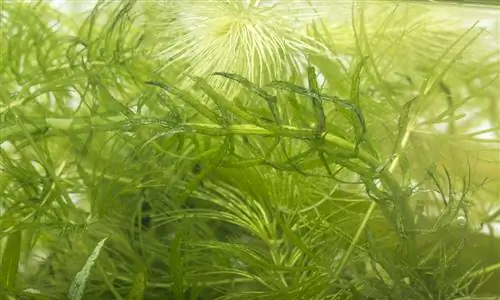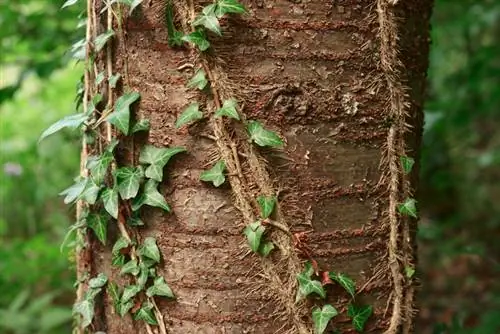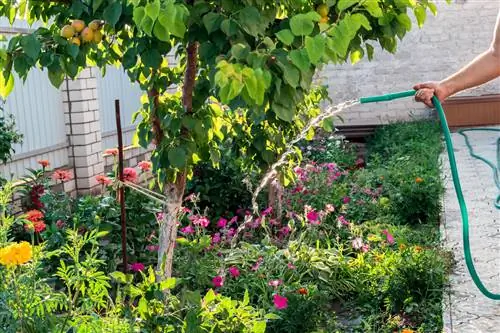- Author admin [email protected].
- Public 2023-12-16 16:46.
- Last modified 2025-01-23 11:22.
The water plague is a proliferating aquatic plant. The stems, which can be up to three meters long, are numerous and hard to miss. With the roots the situation is reversed. Some observers wonder whether this aquatic plant even has any. We'll clarify.

Does the water plague have roots?
The waterweed forms roots in thickened areas (nodes) of the stem, from which the leaves also grow. Roots serve to anchor the soil and absorb nutrients from the water. The plant reproduces easily, even without existing roots.
Root formation at the nodes
Nodes are thickened areas on the stem from which the leaves emerge. A stem has several nodes arranged at regular intervals. The waterweed does not form runners or rhizomes. It pushes out its roots from these nodes.
Theoretically, wherever a leaf arises, a root can grow. In practice, the plant does not form roots at every node, but as needed.
Sense of root formation
One task of the roots is to anchor them to the ground. Therefore, the waterweed will form roots after planting. However, these are largely covered by the substrate and therefore cannot be recognized as such by us. The amount can also be described as small.
Roots can also form further up, on stems surrounded by water. If the waterweed is in the aquarium, it can be clearly seen in the clear water. They probably serve to absorb nutrients from the water.
Tip
Waterweed plants in the pond that are already firmly rooted in the substrate are difficult to control. Therefore, take into account your enormous growth urge when planting.
Propagation without roots
The fact that roots can sprout from every node makes the propagation of this plant easy:
- a small piece of the plant is enough
- it doesn't have to have roots yet
- when planted it soon forms roots
- can also be placed on the water
- drifting, it looks for an opportunity to take root
Tip
Be careful not to accidentally contribute to the unwanted spread of waterweed. After cutting the plant, you must remove the cut parts of the plant from the water as completely as possible.






